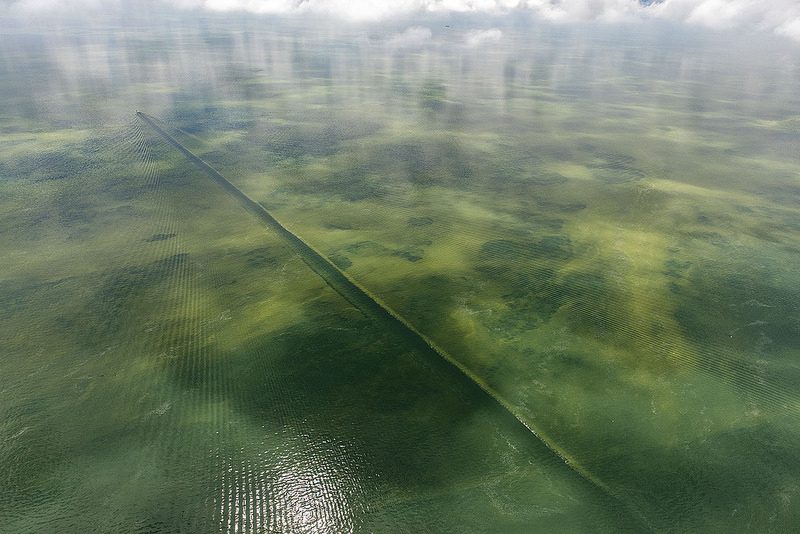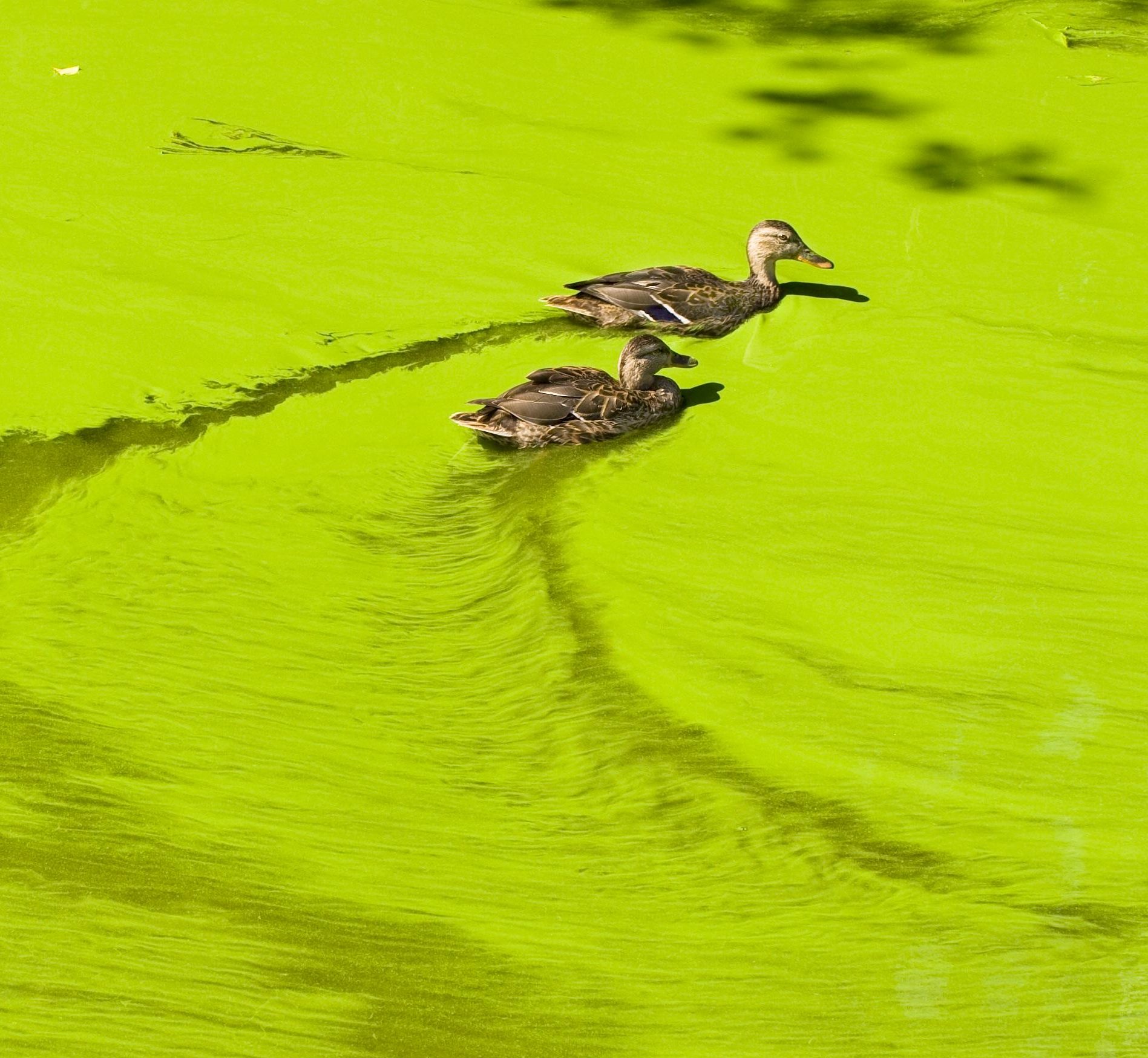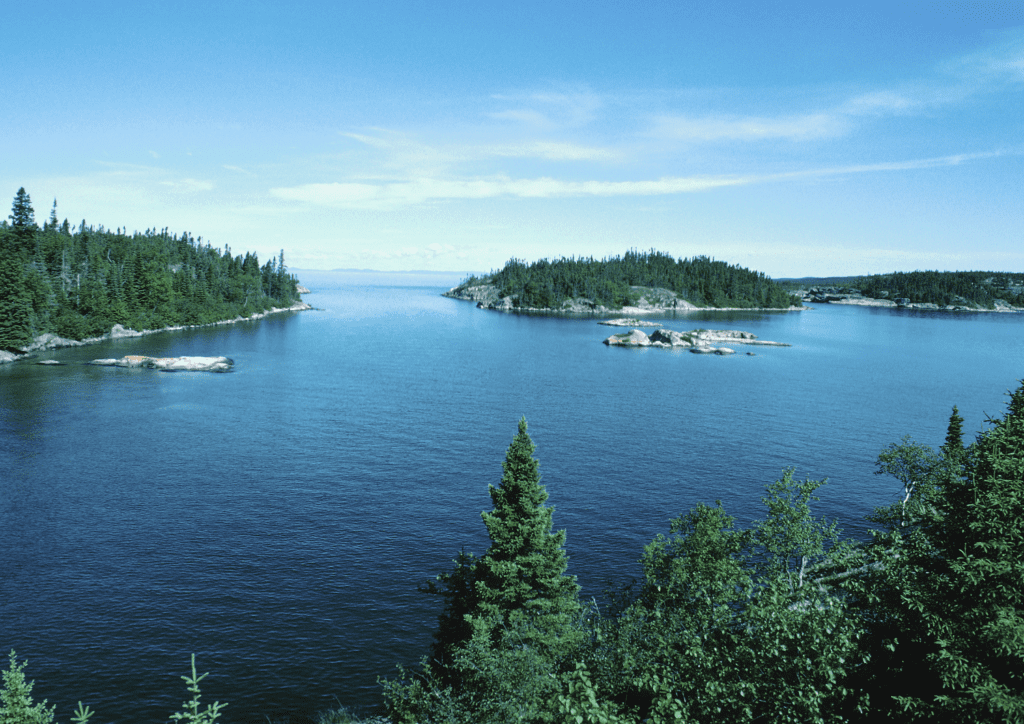Imagine kicking back on a sunny patio with a cold drink and good friends. You hear the soft lapping sounds of waves against the shore, and you’re looking forward to an afternoon paddle or swim. Or maybe you’re planning to get out on the water and catch some world-class walleye. Or hoping to catch a glimpse of one of the hundreds of species of songbirds that make a pit-stop here on their great migration journey. Imagine if instead, the fish are dead, the birds gone, and the water is too toxic to swim in.
This is Lake Erie. And this is what could happen if we don’t protect it.


Lake Erie is under threat
Lake Erie is plagued by increasingly frequent, severe, and sometimes toxic algae blooms. These blooms threaten drinking water, clog intake pipes, suffocate fish, and deter tourists. And one study estimates that if we don’t do something about it, the blooms could cost the local Canadian economy upwards of $272 million annually.
This week, the U.S. National Oceanic and Atmospheric Administration (NOAA) released its annual algae bloom forecast for Lake Erie. The verdict? While this year’s bloom might not be the worst on record (2015 takes the cake), it will be significant. Sadly, it seems that a lake blanketed in green slime is the new normal for the lake.


Photo credit: NOAA Great Lakes Environmental Research Laboratory
All of the most notable blooms have happened in the last five years. In 2014, an algae bloom left nearly 500,000 Lake Erie residents without safe tap water for days. The 2015 bloom was the largest bloom every recorded. And last year, just when we thought we were in the clear, we were gifted a pre-thanksgiving bloom so big that it touched the shores of two U.S. states, and Ontario’s shoreline too.
Nutrient pollution feeds the bloom
One of the main causes of algae blooms is nutrient runoff. Farmers apply fertilizers and manure to their fields, but rain and snowmelt can flush these soil amendments into streams and rivers. Those streams then carry these nutrient-rich pollutants into the lake where they do what they do best – make plants grow. And with all those extra nutrients the algae grows out of control.
Ontario needs to do more
Earlier this year, the federal and Ontario governments released a joint plan to tackle algae blooms and curb nutrient runoff. The plan has some great stuff – including new federal funding for research and innovation, but it lacks concrete and enforceable actions to address nutrient runoff from agricultural lands. And that’s where the majority of the pollution is coming from.
What’s the solution
Algae are complicated organisms, existing in a complex ecological system. There is no silver bullet when it comes to cleaning up this green, slimy mess. We need to target the biggest sources of nutrient pollution and turn off the tap. The good news is we already have laws on the books to help keep nutrients out of Ontario’s waterways. The bad news is those laws are often not enforced.


Act now, and tell Ontario to do more to protect the lake, starting off by enforcing existing pollution prevention laws.
Ontarians need clean water. And we need government leadership so we can continue to swim, paddle, fish, and bask along the shores of Lake Erie.







